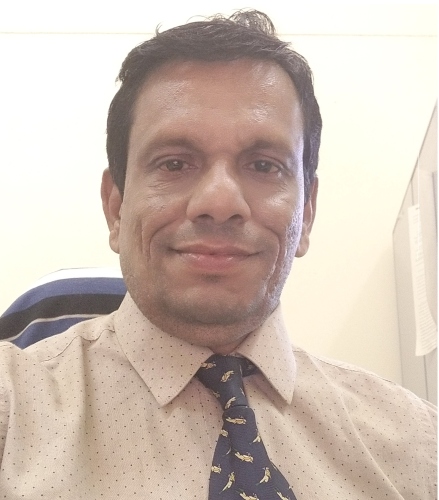
The Portuguese admiral Afonso de Albuquerque conquered Ilhas from Adil Shah on November 25, 1510. He went on annexing other talukas and Goa became Estado da India Portuguesa. Along with the Portuguese troops came the different order of preachers to Goa and started evangelization of the locals. They used Latin to preach the Gospel. The locals could not understand the language, as they were conversant in the local language – Konkani which is spoken in the Konkan belt. It is believed that Konkani emerged from the Apabhansha language around the 10th to 12th centuries. Konkani originated from Shouraseni Prakrit and some scholars regard Bengali or Assamese as the mother of the Konkani language. Konkani was referred to as Lingua Konkana by the Portuguese. The missionaries studied Konkani orthography and vocabulary to spread Christianity.
In 1556 the Jesuits, who were the greatest advocates of Konkani, established a printing press that was the first in Asia. Fr Thomas Stephens, an English Jesuit who came to Goa in 1579, learned and wrote in Konkani and Marathi languages. He produced Konkani grammar, which is the first grammar of any Indian language to be printed in 1622. Arte de Lingua Canarim (1640) was the first Konkani and first Indian grammar book ever published by Fr Stephens. This laid a foundation for the Roman script. He made the first attempt to translate the Bible into Konkani in 1559, but faced a lot of trouble from the Portuguese rulers who wanted to eliminate the Konkani language and the locals had to speak and write only Portuguese. In 1684 the Portuguese viceroy issued an order which forbade the use of Konkani; the books written in local languages were destroyed. The Jesuits, who used Konkani in the missionary work, were expelled in 1761. As a result, the Konkani speaking community got fragmented and migrated into Kannada and other areas to escape the atrocities of the rulers, and their language also suffered the same indignation.
However, as the years went by it was felt that knowledge of the vernacular language is a must to propagate the Christian faith, for business and also to get support from the natives. Christian books had to be printed in vernacular languages for the benefit of the converts. Though many missionaries were conversant with Devanagri script, they found that it was easier to print Konkani in Roman script. Thus, the adoption of the Roman script facilitated the printing of Konkani on a large scale due to the availability of the press at the College of Rachol and College of St Paul. While printing in Roman script began in the 17th century, the printing in Devanagari had started sometime in the 19th century.
The history of Bible translations into the Konkani began with Italian Jesuit Fr Ignazio Arcamone (1615–1683), who worked in Salcette parish. He was the first to translate parts of the Bible to Konkani which was published from Rachol Seminary Printing Press in 1667 under the title: Sogllea Vorunsache Vanjel. The New Testament was translated into Konkani from Latin in the 19th century, which is used by the Church to date.
A need was felt to promote Konkani literature amongst the masses. Thus, many Goan clergy and like-minded writers came forward in publishing books, magazines, and periodicals. The following are some of the periodicals that promote Konkani in Roman script. The Thomas Stevens Konknni Kendr launched in 1915 Dhor Moineachi Rotti, while the Pilar Society fathers Arsencio Fernandes and Graciano Moraes started a Konkani weekly- Vauraddeancho Ixtt in 1933. Both of these are available even today. Fr Freddy J da Costa started the monthly magazine the Gulab in January 1983, while Jivit was started in September 2006 under the banner of Kala Niketan, Majorda.
A few institutions that promote Konkani in Roman script need a mention. The Thomas Stephens Konknni Kendr is a research, educational and cultural centre named after Fr Thomas Stephens. The Dalgado Konknni Akademi (DKA), which was established in 1988 in honour of Sebastião Rodolfo Dalgado, with Fr Freddy J da Costa as its first president who strived hard for the development and promotion of Konkani. Fr Pratap Naik took initiative to publish Konkani Orthography in Roman Script through DKA in 2010 to bring uniformity among the writers, so that they could understand the principles and rules of writing Konkani in the Roman script.
The dramatic form of promotion of Konkani started with Tiatr. It depicts the family life on a stage through acting and rendering of feelings through songs. The first Tiatr was Italian Bhurgo which was written and directed by Lucazinho Ribeiro in 1892 in Bombay. However, it was João Agostinho Fernandes, the father of Tiatr, who wrote and directed numerous Tiatrs and raised the standard of the Konkani stage. Alfred Rose enriched Konkani music by composing and singing more than 40 albums. The love song of people of Goa- Mandos and the traditional dance song - Dulpods - took birth in Loutolim, Chandor and Curtorim. The first Mando is thought to have been written and sung around 1840 in Curtorim. Luizinha mhojea Luizinha is said to be one of the melancholic and oldest Mando based on the gruesome murder of a Portuguese captain at Divar in 1854.
The credit for keeping the Konkani in Roman script alive goes to the Goa archdiocesan clergy who preach the gospel using the Romi Misa–Gronth, in particular, Fr Vasco do Rego, who helped in the translation of Gospel of John, and the letters of Peter and John in Konkani in 1971 and also wrote several hymns for the Gaionancho Zhelo.
Meticulous efforts to revive Konkani have been made by several book writers, Tiatrists and audience, and the village folks who promote Konkani by wishing each other Dev boro dis dium, not forgetting Dev borem korum for the gratitude. As Niz Goemkars, let us make efforts to promote Konkani in our day-to-day activities.
(Dr Luis is a freelance writer)